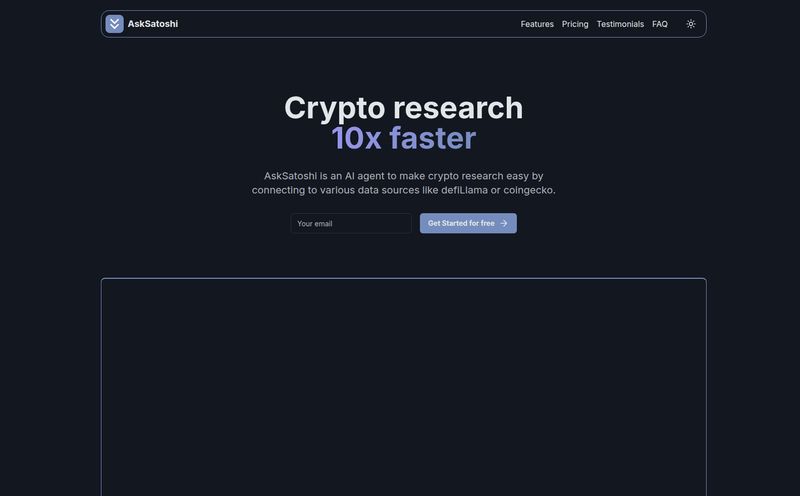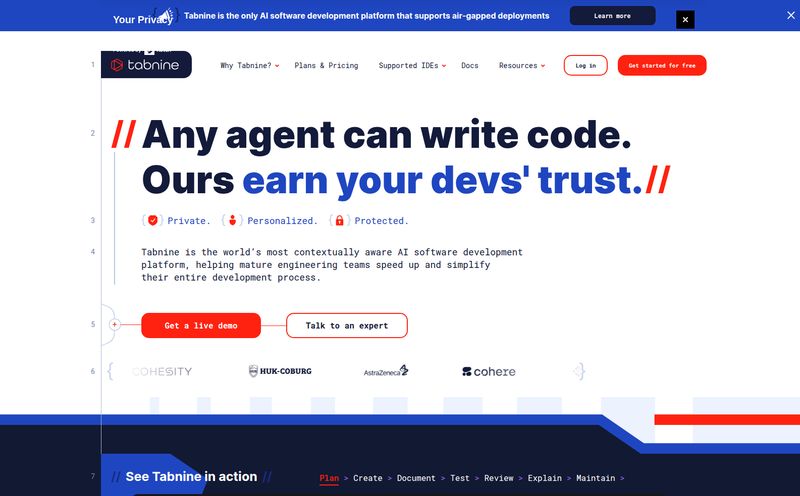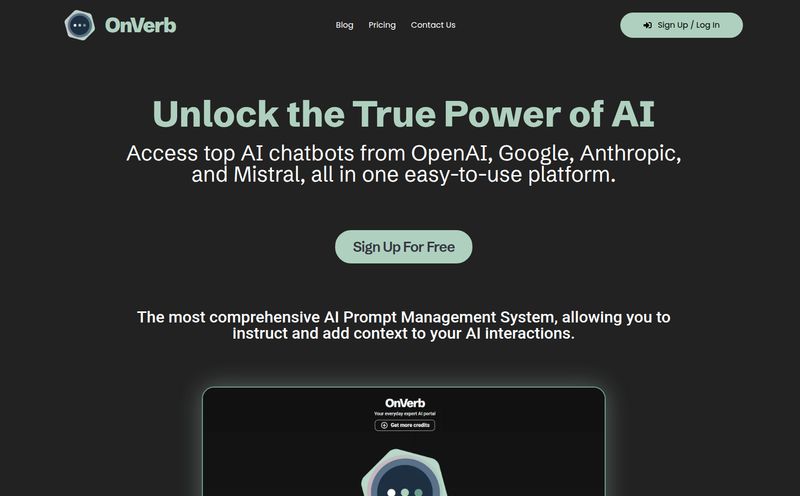We've all been there. You sign up for a shiny new SaaS tool, excited by its promises to revolutionize your workflow. You log in, and... you're met with a dashboard that looks more complicated than a spaceship's control panel. The 'guided tour' is a series of 15 annoying pop-ups you click through impatiently, and the help docs are a black hole of outdated articles. Two hours later, you've achieved nothing, your coffee is cold, and you're ready to churn before you've even really started.
It’s a tale as old as software itself. As someone who’s been in the SEO and digital marketing game for years, I’ve seen countless brilliant platforms fail not because their product was bad, but because their user onboarding was a nightmare. High churn rates, endless support tickets, and low user activation are the ghosts that haunt even the best SaaS companies.
So when I came across Marketrix.ai, my professional skepticism immediately kicked in. Another AI solution promising the world? Yawn. But the more I looked, the more I realized this might be... different. It’s not just another chatbot in a little bubble. It’s aiming to be something more, a sort of ghostly co-pilot that lives inside your software. But is it just clever marketing, or is it the real deal? Let’s get into it.
So, What Exactly Is Marketrix.ai?
At its core, Marketrix.ai is a SaaS solution designed to make software support itself. Imagine your application having its own built-in expert, an AI avatar that can provide real-time, human-like guidance right on the screen. It's not about redirecting users to a knowledge base; it's about showing them what to do, where to do it, as they're doing it. Think less Clippy, more like a patient teacher sitting next to you, pointing at the right buttons and explaining why you're clicking them.
The platform uses what it calls “agentic, simulation-based product understanding.” That's a mouthful, but the concept is brilliant. It essentially creates a dynamic, intelligent layer over your existing software. This layer understands the UI, the workflows, and the user’s context, allowing it to provide hyper-relevant assistance. For sales teams, customer success managers, and app builders, this is a pretty big deal.

Visit Marketrix.ai
It’s designed to keep pace with every little UI or workflow change you make, which is a common failing of old-school guided tour tools like WalkMe, which can break every time a developer pushes an update. The goal here is hands-free task execution and guidance, so users get their work done faster and support costs, hopefully, begin to disappear.
Breaking Down the Core Features
The tech sounds cool, but what does it actually do? It seems to boil down to a few key capabilities that work together.
Agentic Product Simulations
This is the star of the show, in my opinion. Instead of a pre-recorded video or a rigid, step-by-step tour, Marketrix creates a live simulation of your product. It autonomously learns your software's flow, which means users can interact with a true-to-life version without breaking anything. This is huge for complex enterprise software where a wrong click can have real consequences. It’s a safe, interactive playground for learning and mastery.
TaskPilot and AI Co-Browsing
Okay, this is where it gets a little sci-fi. TaskPilot is the name for their hands-free AI assistant. It’s the part that actively guides users, automates tasks, and handles interactions. But the real magic is the AI Co-Browsing. This feature bridges the gap between fully automated support and needing a real human. A support agent can join the session, but instead of just telling the user what to do, the AI can help execute the steps. It’s a collaborative approach that could slash resolution times.
Contextual Guidance and Spatial Awareness
Ever used a help tool that gives you a generic answer unrelated to what you're actually trying to do? It’s infuriating. Marketrix.ai aims to solve this with contextual guidance. Because the AI has “spatial awareness,” it knows what page the user is on, where their cursor is, and likely what their goal is. This allows it to offer prompts and help that are actually relevant in that specific moment. No more searching for answers—the answers find you.
The Real-World Impact on Your Bottom Line
Features are nice, but I'm an SEO guy. I care about traffic, conversions, and ROI. So, how does this translate into tangible business results?
First off, you're looking at a serious reduction in support costs. Think about it: if the software can answer 70-80% of routine user questions on its own, your support team is freed up to handle the truly complex, high-value problems. That’s not just a cost saving; it’s a morale booster for your support staff who are tired of answering “how do I reset my password?” a hundred times a day.
Then there's the big one: user adoption and retention. I once tried to use a data visualization tool that was incredibly powerful but so unintuitive that I gave up after a week. I churned. I’m a paying customer they lost forever simply because they couldn’t teach me how to use their product effectively. Marketrix.ai directly tackles this. By providing 24/7, instant, and personalized guidance, it helps users get to that “aha!” moment faster. And a user who feels competent and powerful within your app is a user who sticks around.
Okay, But What’s the Catch?
Nothing is perfect, right? As promising as Marketrix.ai sounds, there are some practical considerations and potential downsides we need to talk about. This is where the real-human analysis comes in.
For one, it requires an initial setup and AI training period. This isn't a simple plugin you install and forget. You'll need to invest time and resources to let the AI learn your platform. For a busy startup, that initial effort could be a barrier. You have to be willing to play the long game for teh payoff.
Secondly, it might not be a silver bullet for every type of software. For a super-simple, single-function app, this might be overkill. It seems best suited for feature-rich, complex platforms where the learning curve is a known friction point—think CRMs, ERPs, analytics platforms, and other enterprise-grade systems.
And then there's a curious little detail: the pending patent. On one hand, this signals they believe they have something truly innovative and defensible. That’s exciting. On the other hand, it introduces a sliver of uncertainty. What if the patent doesn't get approved? What does that mean for future development? It’s a small risk factor, but one that a CTO or investor would definitely notice.
What About the Price Tag?
And now for the question on everyones mind: how much does it cost? Well, if you go looking for a pricing page on their website, you'll find... nothing. Just a “Request Demo” button. Classic enterprise B2B move.
Honestly, this isn't surprising. A tool this specialized isn't going to have a simple three-tier pricing model. The cost will likely depend on your number of users, the complexity of your software, and the level of support you need. It’s a bespoke solution, and they price it accordingly. So, if you're a tiny bootstrapped startup, this might be out of reach for now. But for established SaaS companies or enterprises hemorrhaging money on support and churn, the ROI could make the custom price tag a no-brainer.
My Final Take as a Tech Blogger
After digging in, I’m cautiously optimistic. I’ve seen the promise of AI in customer support for years, but it's often been clunky and disappointing. Marketrix.ai feels like a genuine step forward. The focus on simulation and contextual awareness, rather than just text-based chat, is the right direction.
It’s an admission that software has become too complex for its own good, and we need smarter ways to bridge the gap between human intuition and digital interfaces. This isn’t about replacing humans, it's about augmenting them. It lets the software do the repetitive teaching, so users can achieve their goals and support agents can become true problem-solvers.
Is it the end of clunky onboarding? Maybe not overnight. But it's a very, very promising start. I can even see applications for this beyond customer support, like for internal employee training on complex proprietary software. The potential is definitely there.
Frequently Asked Questions
- Who is Marketrix.ai best for?
- It's ideally suited for medium to large SaaS companies and enterprises with complex software. If your platform has a steep learning curve and you're struggling with user activation or high support ticket volumes, Marketrix.ai is designed for you.
- Is Marketrix.ai difficult to integrate?
- The website claims it's easy to integrate. However, like any powerful tool, expect some initial setup and configuration. The 'ease' will likely depend on your existing tech stack and the complexity of your application. It's not a 5-minute WordPress plugin, that's for sure.
- How is this different from a normal chatbot?
- A standard chatbot primarily answers questions with pre-programmed text in a chat window. Marketrix.ai is fundamentally different. It operates within your application, visually guiding users, simulating tasks, and understanding the on-screen context to provide proactive support.
- Can Marketrix.ai handle complex, multi-step tasks?
- Yes, that's one of its main selling points. Through its Agentic Simulations and TaskPilot features, it's built to guide users through entire workflows, not just single actions.
- Is there a free trial for Marketrix.ai?
- There is no public-facing free trial. The business model is centered around a personalized demo where they can understand your needs and show you how the platform would work specifically for your software. This is common for high-value B2B solutions.
- Does Marketrix.ai replace human support agents?
- No, it augments them. The goal is to automate the repetitive, low-level support queries so that your human agents can focus their expertise on high-impact, complex customer issues that require critical thinking and empathy.
Final Words
The constant struggle to balance feature development with user education is real. We build powerful tools, but we often fail at teaching people how to use them. Marketrix.ai presents a compelling vision for the future of user support—one where the software itself becomes the teacher. By moving support directly into the user experience, it has the potential to dramatically improve adoption, cut costs, and maybe, just maybe, make new software fun to learn again.



